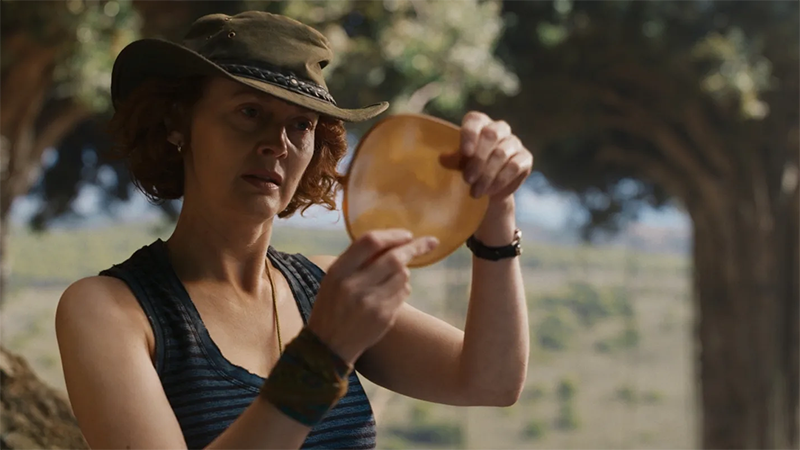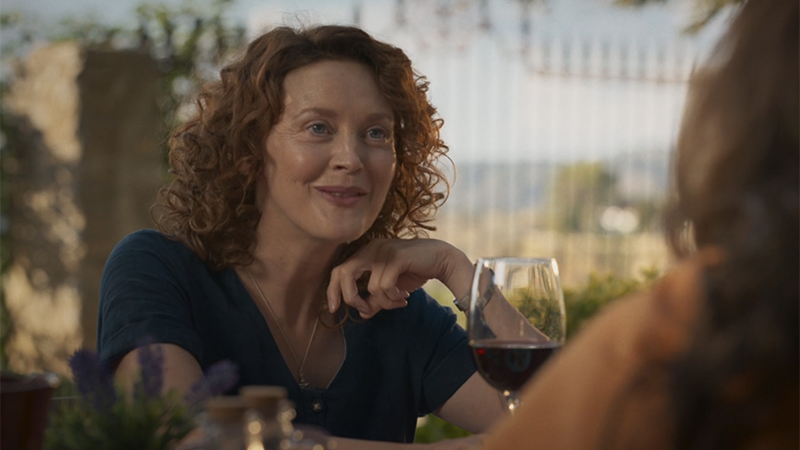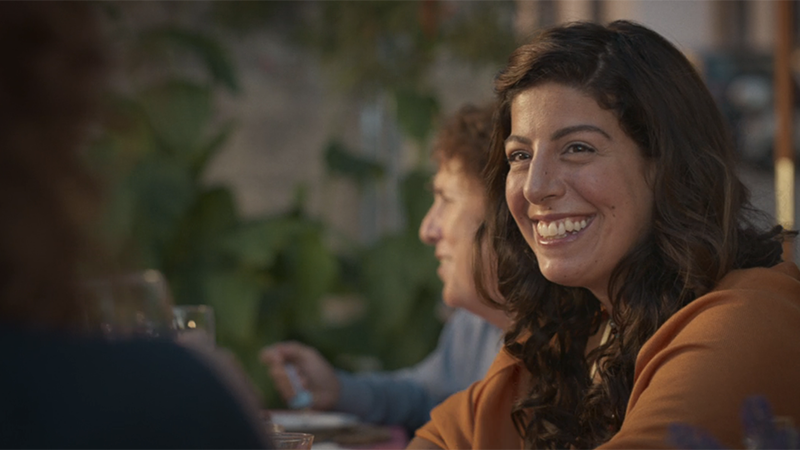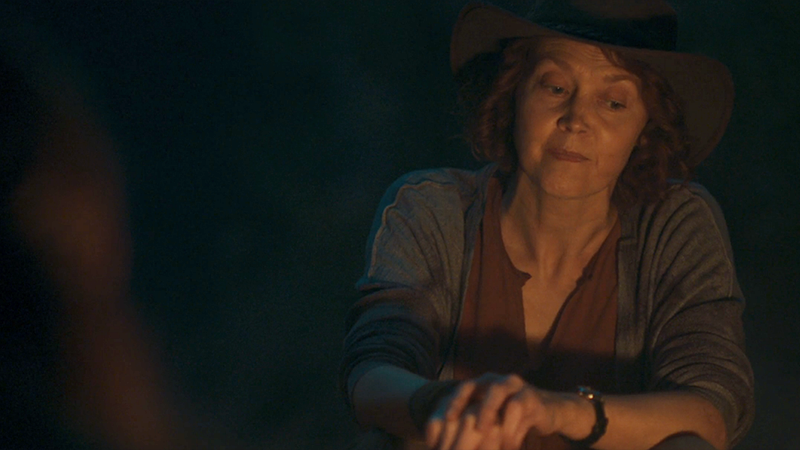HBO’s adaptation of His Dark Materials has been up and down, which makes sense, really, because Philip Pullman’s beloved trilogy is pretty uneven too. The TV show is a faithful adaptation, one of the best kinds, staying true to both the plot and the spirit of the original books. But when the series finale aired this week, I was shocked (delighted, overwhelmed) to find that the writers made one major change that adds a whole lot of poignancy to the final chapter. Happily, it’s a gay one!

Dr. Mary Malone is a lot of things in Pullman’s fantasy series. She is the inventor of the Amber Spyglass that allows humans to see Dust, which is the elementary particle responsible for consciousness (pleasure, passion, imagination, sensation, experience, feeling). The Church hates Dust; they believe, in fact, that it’s the manifestation of Original Sin. Mary’s no stranger to angering The Church. She was a nun once, with a belief that she could study astrophysics and neuropsychology for the glory of God. But she hurled her crucifix into the ocean somewhere along the way and crushed the hopes of the priests, her parents, and Mother Superior because she came to believe that all the messy, gooey, lusty, longing, aching feelings of human relationships weren’t sin at all. She believed it because she remembered a time when she was fed a piece of marzipan by a boy, after dancing with him at a party when they were both teenagers.
When Mary is told that she’s going to play the serpent to the second Adam and Eve — teenagers Lyra and Will, who are trying to save the worlds — she’s not exactly sure what that means. But at the end of the books, just like the end of the TV series, she simply needs to tell them the story of the marzipan.
Only in the adaption, it’s not a man who feeds Mary the marzipan. It’s a woman. Because Mary is a lesbian.


On the face of it, saying that the serpent in the Garden of Eden is a queer woman is a dangerous proposition. The kind of thing that could get twisted real fast, especially in these current political times where false narratives of “grooming” are being revived and chasing LGBTQ+ people around the country and informing all kinds of horrific legislation aimed at oppressing and persecuting queer and trans kids. But oh, the series gets it just right. Mary tells the story to Lyra and Will by the light of a campfire at the urging of a mulefa. Simone Kirby’s lilting, gentle Irish accent weaves a magic spell around them as she recounts the memory of a woman at a conference who mesmerized her, who handed her a piece of almond candy that unlocked the memory of another girl, a million years ago, doing the same. “She offered me a sweet and it changed my life forever,” Mary says. “For the first time, I was living my life with all of my nature; not just a part of it.”
Mary’s story of coming to life under the tender touch of another woman is the climax of the narrative. In the light of it, Lyra and Will begin to understand that what they feel for each other is much more than friends, they kiss, and the Dust stops flowing out of the world; instead, it surrounds them.

Mary’s story is also the crux of what Pullman spends the whole series trying to say about The Church.
“I asked myself: Would anyone be better off if I just go back to my hotel, and say my prayers, and promise never to fall into temptation again?” Mary says to Lyra and Will, by the campfire. “And the answer came back: No. No one would. And I realized, there was no one there to reward me for being a ‘good girl’ or no one there to punish me for being ‘wicked.’ There was no one — and it was liberating.”
Dr. Mary Malone’s queerness makes perfect sense, and is absolutely revolutionary. She’s the snake in the story of the fall of man! She’s the one that opens Adam and Eve’s eyes to the Dust, the one who exposes them — and humankind — to sin! But Mary says Dust isn’t sin at all. She says the The Church has it all twisted. She says Dust is the spark that means we’re alive. Mary bravely chases her own truth, she quietly tells her story, and in her legend of love, two kids find their own. And they use it to save the worlds.



The books are some of my favorites and I’ve read them a few times, so I was watching this fully expecting to hear the story about the boy, and the show hit us with this instead! I was excited, because not only is it always nice to get (positive) unexpected gay moments in my TV shows, but it added another level to Mary’s decision to leave the church.
She is a lesbian, not a gay
Good thing I called her “a lesbian” and not “a gay” then!
Of course! This feels so right. I quit Philip Pullman after The Secret Commonwealth (because what the hell was that), but the original trilogy still has such a formative place in my life. Mary Malone has always been queer in my heart.
I have never heard of this show (I promise, I do not live in the spaces between drywall). But after reading this review, I think I’ll have to add another show to my ever-growing, never-shrinking list. 😁
Yes! I agree that the series overall had its ups and downs, but overall the finale worked really well for me, especially this aspect. It felt like such a perfect choice for her character that I actually couldn’t remember that she was straight in the book version. The actress + the writing + everything else made me feel like in some ways growing into a queer elder like Mary Malone is a life goal for the next stage of my life (not that she’s that old here, just enough older than I am to feel aspirational).
I adored these books as a teenager and was actively avoiding the miniseries because this world in my youthful imagination felt so rich – some adaptations, like Station Eleven, surpass their source, in my opinion, but it’s fairly rare. But I might have to just watch the finale, because I love this change –– and it makes total sense, within the original narrative too. I love the added layers of meaning that making her canonically a lesbian adds.
This was such a beautiful article, thank you. I haven’t watched the finale yet, but I’m so excited. Mary as a lesbian has been a fan theory for so long, I’m so happy they made it (tv series) canon, and even happier to know that they executed it well.